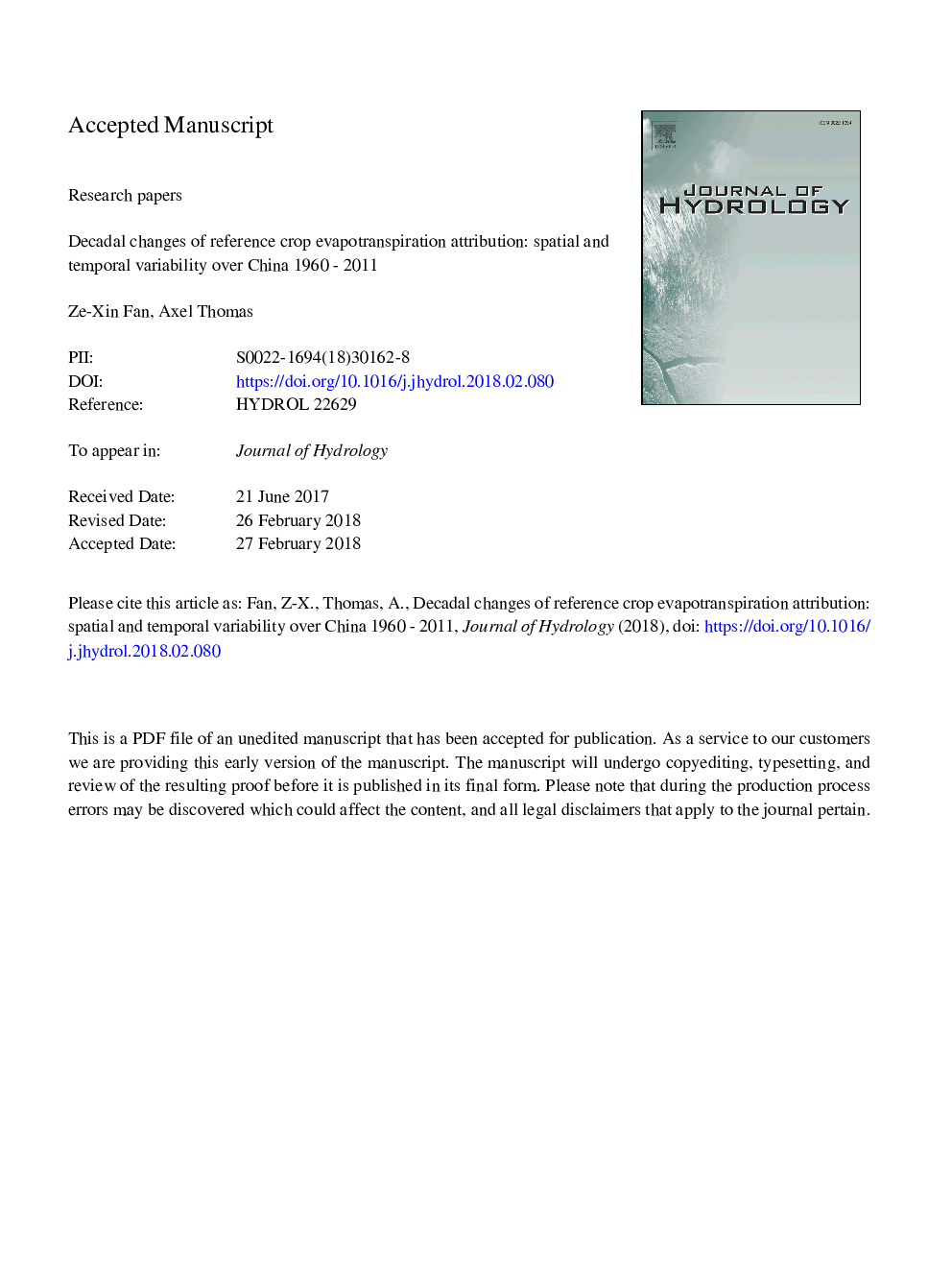| Article ID | Journal | Published Year | Pages | File Type |
|---|---|---|---|---|
| 8894820 | Journal of Hydrology | 2018 | 40 Pages |
Abstract
Atmospheric evaporative demand can be used as a measure of the hydrological cycle and the global energy balance. Its long-term variation and the role of driving climatic factors have received increasingly attention in climate change studies. FAO-Penman-Monteith reference crop evapotranspiration rates were estimated for 644 meteorological stations over China for the period 1960-2011 to analyze spatial and temporal attribution variability. Attribution of climatic variables to reference crop evapotranspiration rates was not stable over the study period. While for all of China the contribution of sunshine duration remained relatively stable, the importance of relative humidity increased considerably during the last two decades, particularly in winter. Spatially distributed attribution analysis shows that the position of the center of maximum contribution of sunshine duration has shifted from Southeast to Northeast China while in West China the contribution of wind speed has decreased dramatically. In contrast relative humidity has become an important factor in most parts of China. Changes in the Asian Monsoon circulation may be responsible for altered patterns of cloudiness and a general decrease of wind speeds over China. The continuously low importance of temperature confirms that global warming does not necessarily lead to rising atmospheric evaporative demand.
Keywords
Related Topics
Physical Sciences and Engineering
Earth and Planetary Sciences
Earth-Surface Processes
Authors
Ze-Xin Fan, Axel Thomas,
